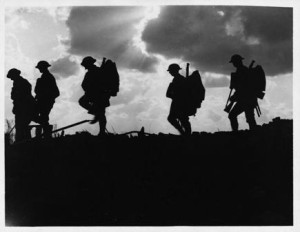
Learning about brain injury through stories helps deepen our understanding of brain injury:[unordered_list style=”green-dot”]
- the cognitive outcomes,
- the physical and behaviour changes,
- and the life changing impact of brain injury on each person.
[/unordered_list]
The Beginning
I was driving my daughter to school recently, she was doing some last minute study for a test on electricity and wanted my help. I confessed to her, that most of what she was studying, I had no understanding of, and it all felt very confusing. She then explained what she had been learning, giving real life examples of the concepts in action; telling a story about electricity. It made it real and understandable for me.
Thinking about this experience and the importance of stories coincided with a couple of weeks of finding all sorts of exciting stuff about brain injury.
When I looked at the path I had taken, it began and ended with stories. I had learned more about the nature of brain injury through stories.
And well might you now ask:
What has any of this really got to do with brain injury?
We learn in many ways, and an effective way is through the stories and experiences of ourselves and others. We can learn a lot about brain injury through stories.
One of the BECAUSE principles I talked about last week was collaboration. A form of collaboration is to listen to the stories of others. It is part of being able to support and understand each other. It helps build respect and trust as we listen and share.
Another BECAUSE principle is to Understand. When we are open to the stories and experiences of others, we can find ourselves on an unexpected, but worthwhile learning path. It also helps us better understand the person, who is telling the story.
I am not suggesting there is not a place for the formal instruction, or theoretical learning. I am suggesting we can also learn about brain injury through stories … and often it is more interesting, and a heap more fun.
Apparently it is also good for our brains!! Seriously – I found this article ‘The Science of Storytelling: Why Telling a Story is the Most Powerful Way to Activate Our Brains’ quite by accident. It seemed so relevant to what I was thinking about and fascinating. What do you think?
My Story of Learning about Brain Injury through Stories
Here is a story about my discovery over the past couple of weeks:
I decide on a topic for the weekly post (that’s a whole other story!). Topic decided, I begin by searching my own recollections and resources. Then I head online and begin a Google search.
For those of you familiar with internet searching you will know it can be a labyrinth of time-wasting, as you go down a whole variety of rabbit holes, and get distracted along the way. I have found myself forgetting my original quest and going off on an entirely new tangent. Always interesting, not always focussed!
I was researching the last two posts on disinhibition for stories and strategies. I came across two people – two Cheryls actually. Each told a story that talked about disinhibition in a way that touched you and explained disinhibition in a personal way.
If you have not seen the last two posts the two wonderful women I found out about are Cheryl Ganser and Cheryl Green. I wanted to know more about their stories, and set out on a further search. Yes I know, at this point you could argue this might be plain curiosity, not necessary research.
Let me try and recreate my labyrinth of discovery about Cheryl Green.
The Beginning: A Google search and I found a website. I was interested to see it is called Storyminders. This says to me I am not muddling around, wasting time – it’s a perfect fit with my topic today. So on I go.
On browsing the Storyminders I found ‘Brain Injury and Disability in the Arts which had a list of films. “That is useful” I say to myself. “It adds to the list I began in an earlier post about brain injury in movies”
The search then leads me to a video (below) in which Cheryl talks frankly, and with humour about living with a brain injury. Such a personal, open, and enlightening discussion about living with cognitive difficulties and how brain injury is different.
This video also then leads me to whereslulu.com. A site where nothing is taboo and the hosts Caitlin (Lulu) and Toshio bring people together to reduce the barriers that segregate.
You know when you begin to look at a new something – a colour scheme, a car, outfit, book, anything, and suddenly its everywhere – well let me tell you STORIES are everywhere.
I read a newsletter from Summer Foundation that talked about stories and storytelling workshops for people living with brain injury.
I was listening to an audio-book by Brene Brown and she was talking about the importance of stories.The byline on her website is “Maybe stories are just data with a soul”.
I saw a presentation on Power Point that talked about the importance of telling a story in presentations.
STORIES are everywhere. STORIES help us to connect. STORIES help us to learn.
Why is this relevant to me?
You might be asking this by now. Well here are a few reasons for carefully storylistening to a person’s storytelling:[unordered_list style=”green-dot”]
- It helps build respect and trust between you and the person you are supporting.
- Builds your understanding of the person and their needs.
- You gather lots of information about best ways to support, and how to tailor strategies that focus on each person.
- You learn more about brain injury.
- And now we also know – its good for your brain.
[/unordered_list] and experience when you are supporting a person with brain injury:
And finally
Stories are not just entertainment they are a way of learning and connecting. Learning about each individual person, and also about the outcomes of brain injury – or any topic really.
That’s how I found this final link, and yes this is definitely curiosity googling. This little gem on storytelling popped up and I just had to share it (and NO again. Its not about brain injury).
[box style=”rounded” border=”full”]40 Storyquotes that will shake your mind [/box]
